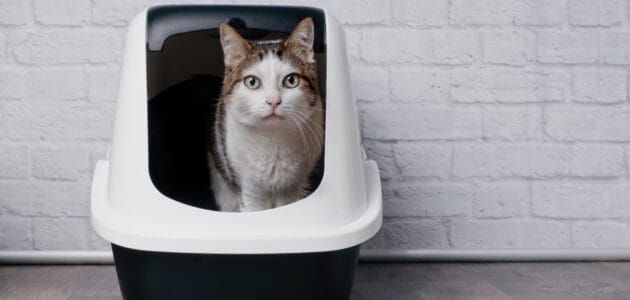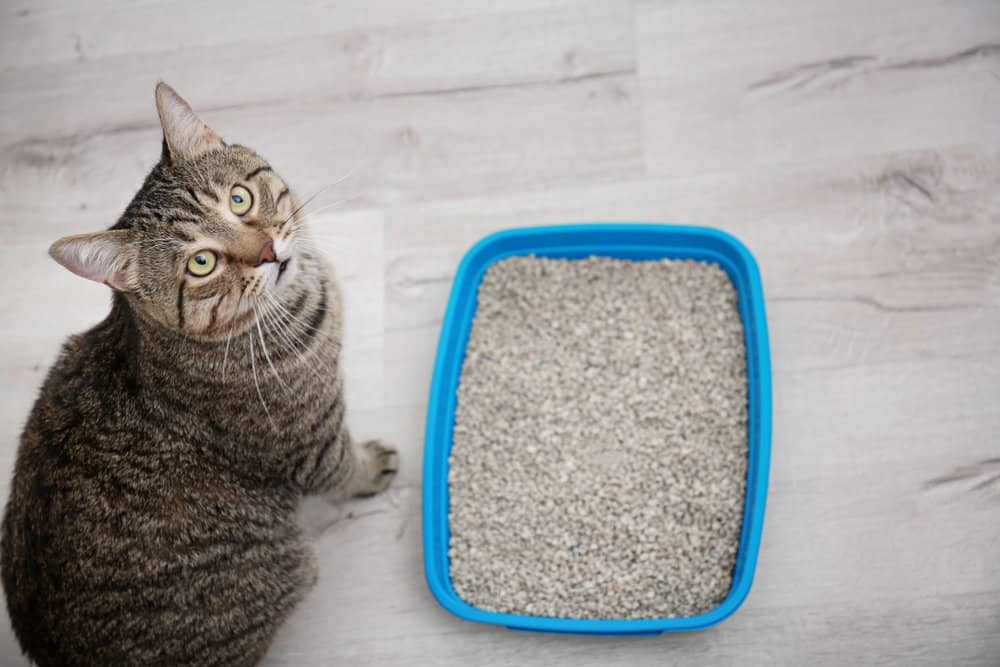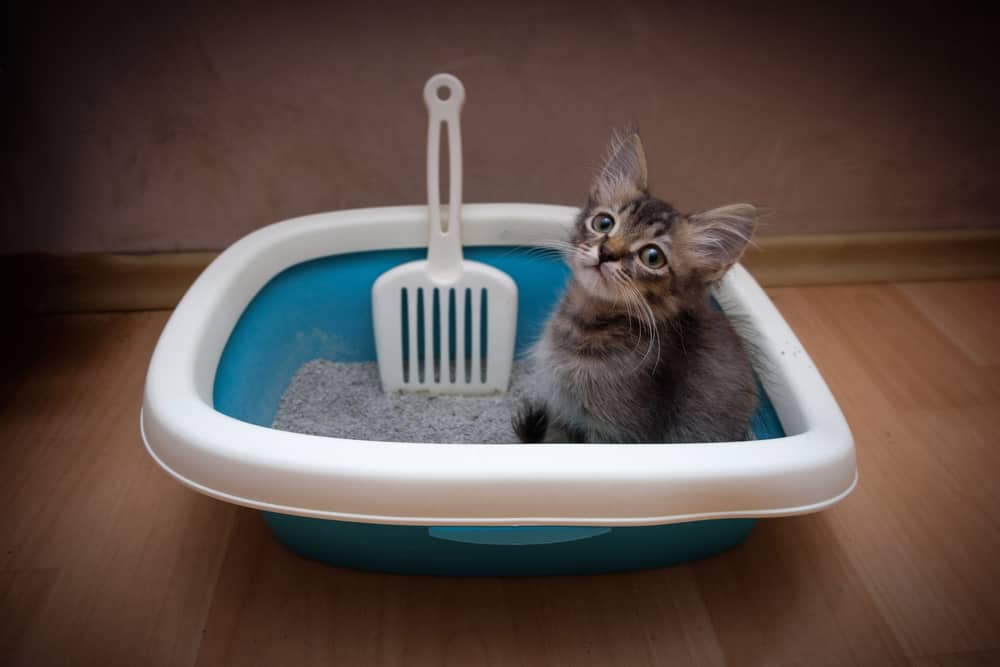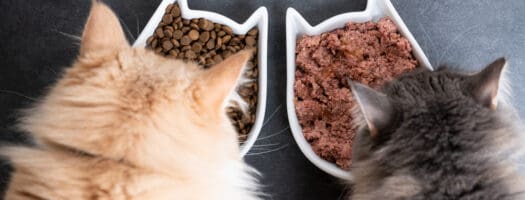How Often Should Cat Litter Be Changed?

When you adopt a cat, you are committing yourself to caring for that cat’s every need and ensuring that they stay healthy and happy. A very important part in keeping your cat in good shape is to clean the litter regularly. It may not be the most glamourous job, but it is essential and something that really shouldn’t be ignored.
Whether you’re a first-time cat owner or you just need a few tips on litter changing basics, we’re here to help you out. In this article, you can find out everything you need to know about changing your cat’s litter and learn the answers to some of the most frequently asked questions about cats and their litter boxes.
Why Cat Litter Needs to Be Changed Regularly
Changing your cat’s litter regularly plays an incredibly important role in keeping your cat healthy and your home mess-free. A dirty litter box can incubate germs and bacteria, leading to an increased risk of your cat developing a bacterial or fungal infection.
Cats will also often refuse to use litter boxes that are dirty, which can end up with them developing bladder and kidney infections from holding in their urine. These infections can turn deadly very quickly and can be very painful for your cat.
Additionally, dirty litter may mean that you start finding accidents all over your home, which is unsanitary and can increase odor in your house.
Types of Cat Litter and How Often You Should Change Them
There are several different types of cat litter available today. How often you change the litter (i.e., completely replace the litter, not just scoop it – which we below) depends on the type that you are using.
Clay Litter
Clay litter is one of the oldest types of litter available. It is created from absorbent naturally-derived clays and contains additives, like bentonite clay, that help the litter absorb moisture. It can be either clumping or non-clumping, depending on the additional ingredients in the litter.
For clumping clay litter, you should be completely changing out the litter once every two weeks. Clumping litter doesn’t need to be changed as frequently, thanks to the fact that the moisture is literally sealed in a clump and doesn’t easily contaminate the surrounding litter.
For non-clumping clay litter, you should be changing out the litter about once a week. This will help prevent odors and stop the litter from becoming too saturated with waste.
Silica Litter
Comprised of crystallized silica gel, silica litters are very absorbent, produce less dust, and are one of the best litter types for controlling odors. However, silica can be dangerous for your cat if large amounts of it are ingested and some owners may want to avoid this risk of this litter altogether.
If you are using silica litter, you should be changing it once a week to once every other week, depending on how much odor you can smell and if the litter looks like it is extremely saturated with waste or not.
Biodegradable Litter
Biodegradable litter is typically created from recycled paper products such as newspapers, or plant products such as pine, wheat, and corn. This type of litter is more environmentally friendly, but it may be hard to get your cat to accept it, as the texture is not as close to a cat’s preferred dirt or sand.
This type of litter needs to be changed frequently, at least twice a week, since the paper products are much more prone to over absorbing liquid and becoming soiled; it may also smell more as a result of this.
Essential Cat Litter Tips
To keep both you and your cat happy, keep these vital tips in mind.
Scoop Out Waste Daily
Additionally, you should be scooping waste out of the litter daily in order to keep the litter as fresh as possible. This will encourage even the pickiest cat to use the bathroom properly. With clay or paper-based litter, you may want to try scooping twice a day to prevent the material from becoming too saturated with waste materials.
Stick to Your Cat’s Favorite Litter
Keep in mind when choosing a litter for your cat that it may take a little trial and error at first; try out sample-sized litters if possible and experiment with textures and materials.
Once your cat shows their preference for a litter type, you should stick with it as much as possible and avoid constantly changing the brand you use, as this can disrupt your cat’s routine and may cause them to start using the bathroom outside of the litter box.
Make Sure the Litter Is Deep Enough
When filling the box with litter, make sure it is at least 3 to 4 inches deep, as this provides enough litter to last you a week or so, and will give your cat enough spare litter to fully bury their waste.

Cat Litter Box FAQs
The answers to these frequently asked cat litter box questions can tell you all you need to know about litter and litter boxes.
Will My Cat Get Sick From a Dirty Litter Box?
A dirty litter box is similar to a ground zero for bacteria. If your cat frequently uses a dirty litter box, their risk for developing fungal infections like ringworm or toxoplasmosis, cat scratch fever, or spreading salmonella increases. They can spread these diseases amongst the other cats or humans in your home, causing serious medical issues down the line.
Additionally, dirty litter boxes may prevent your cat from using the bathroom when they need to. This can lead to urinary blockages or bladder and kidney infections, serious conditions that can become fatal very quickly.
How Many Litter Boxes Do I Need?
As a general rule, you should have one litter box for every cat in your household, plus a spare one. Generally, if you only have one or two cats, you can get away with just having one litter box each, but homes with 3 or more cats should definitely stick to having one box per cat and an extra.
This amount of litter boxes gives each of your cats a safe space to go to the bathroom and prevents dominance-related litter issues, like one cat not allowing others to use the box. The spare box gives them plenty of options for using the bathroom, decreases the amount of other cats’ scent that are on all of the boxes, and prevents the occurrence of any accidents.
Can You Put Litter Boxes Next to Each Other?
It is generally not a good idea to put your cats’ litter boxes next to each other. The idea behind multiple litter boxes is to prevent the litter from becoming too dirty and too contaminated by other cats’ scents, things that can discourage your cat from using the box like normal.
In a multiple cat household, you should spread the litter boxes into different quiet locations around your home to give your kitty plenty of bathroom options.
What Kind of Litter Box Should I Use?
There are many different types of cat litter boxes out there, from wider uncovered trays, to covered trays with doors, and boxes that require entry from the top. It can be hard to decide which kind of litter box your cat will prefer, and you often end up in a cycle of trial and error before finding a litter box that your cat loves.
When trying out litter boxes, look out for signs that your cat is unhappy with the box, such as them refusing to go into it or being too big to comfortably use it; there should be enough space on each side of the litter box that your cat can get into it without their fur brushing against the sides of the box.
Do Cats Need to Be Litter Trained?
Starting from the time they are young kittens, cats will have the natural instinct to use the bathroom in sand or dirt and to bury their waste. This instinct means that you will not have to litter train a cat the same way you would have to potty train a dog.
Cats will begin using the litter tray around 3 to 4 weeks, learning from their mothers how to go to the bathroom. If you have rescued your kitten or they have otherwise been separated from their mother, you can encourage your kitten to use the litter box by placing them in there several times a day and after mealtimes.
This helps them get familiar with the location of the box and the feel of sand, making them more inclined to seek the space out again when they need to use the bathroom.
When Should You Deep Clean a Litter Box?
Besides regularly scooping and changing the litter, you should be deep cleaning your litter box approximately every two weeks. This involves completely removing old litter and scrubbing the box with a gentle dish soap and warm water. When replacing the litter, make sure it is at least 3 inches deep to provide an optimal burying experience for your cat.
Regular deep cleanings will prevent a buildup of waste and keep the box smelling fresh, a bonus for both you and your feline friends.

Clean Litter for Happy Cats
While it’s not the prettiest job, changing out the litter in your cat’s box is a vital part of cat ownership. It is important to keep your cat’s litter fresh and waste-free in order to encourage them to use the bathroom properly and to prevent the development of any kind of disease. Remember, clean, fresh litter makes for happy, healthy cats!




